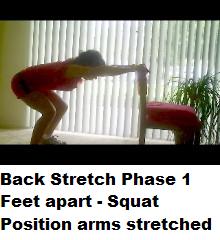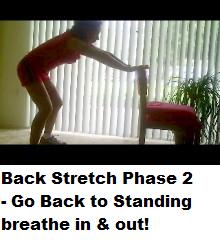By:Â Alicia Weber
If you are a person that believes walking briskly 30-minutes a day will take care of everything and there is no need for anymore exercise – THINK AGAIN!!
The primary muscles used in walking are the lower extremities including the hamstrings, quadriceps, adductors, gastrocnemius, and soleus muscles. There are other muscle groups involved that act as stabilizers such as the gluteals. Walking alone fails to strengthen back muscles properly and chronic low back problems are a growing trend in America.
A walking-only program is really only targeting one area of fitness of the 5 fitness areas – aerobic capacity wellness.
One common trend I find among exercisers that limit their exercises to walking are weak back muscles. On the same hand, if these walkers start adding back and abdominal-specific exercises into their routines they can get immediate gains in fitness and feel even better!
According to the National Health Interview Survey there was an increase from 3.2 percent of the population in 1997 to 8.3 percent of the population in 2006 that experiences chronic low back pain.
There are several possibilities as to why there is an increase in low back pain including
1.) increase in obesity
2.) increase in stress levels that trigger low back pain
3.) increase in depression that is linked to low back pain
4.) sedentary lifestyle with prolonged sitting
5.) improper ways to pick up objects, poor posture, or overall lack of care for the back
6.) failure to strengthen back muscles (in particular the Multifidus M.)
If you have back pain, what do you think is your cause? Finding the cause is one step closer to working on a solution. Overall, back pain is a choice. If you fail to strengthen your back, then you will fall back in overall health! The bottom line is to keep your back strong by doing back strengthening and stretching exercises (see below) to prevent back pain.
The multifidus muscle is a thin muscle found deep in the spine. It needs to be strong, sturdy, and stable to keep each vertebra working effectively. The multifidus muscle is the key muscle in the back that needs to not only contract to produce strengthening effects, but it must be elongated. The multifidus is the strongest muscle in the back and the key stabilizer in the back.
It is possible that traditional back surgery could disrupt the alignment of the multifidus muscle causing the spine to have trouble maintaining an upright position as well as create pain and discomfort. Minimally invasive spine surgeries can result in less disruption of the multifidus muscle and in turn cause less trauma than traditional back surgery. If one is seeking back help via physical therapy, chiropractics, or other methods of back relief and severe back pain continues, then it would be best to get an x-ray. Consistent pain is a sign of seriousness.
Back strengthening and stretching can never go out of style. In fact, I am a firm believer that a back exercise should be performed everyday at least once. It is important in the selection of the back exercise and performance of the back exercise in achieving results.
 Â For instance, if you want to use the back machine in the gym – work on doing greater reps and lighter weight (i.e. a 115 lbs person may just use 50lbs and do 15 – 20 reps even if they could easily use a lot heavier weight.). So back exercises ARE about endurance training and NOT about power training (heavy weight and high intensity). Over doing the back with intense exercise and heavy weights can strain the low the back and cause harm.
 For instance, if you want to use the back machine in the gym – work on doing greater reps and lighter weight (i.e. a 115 lbs person may just use 50lbs and do 15 – 20 reps even if they could easily use a lot heavier weight.). So back exercises ARE about endurance training and NOT about power training (heavy weight and high intensity). Over doing the back with intense exercise and heavy weights can strain the low the back and cause harm.
Whether you are new or a veteran of back exercises, there is one stretch that can really open up the back and all you need is a chair.
The Moving Warrior Pose is a great way to stretch and strengthen the back! Do this exercise for a minimum of 30 seconds and a maximum of 2 minutes. Always start with just 1 set and over time build to doing several sets. The reaching out and stretching up and then reaching out and coming back in works gluteal stabilization, leg endurance, posture alignment, and stretches and contracts the Multifidus M. Once again, because the multifidus is such a small muscle in the back, we want to keep the intensity low and keep the exercise slow. Combine deep tortoise breathing with this moving warrior pose to get additional benefits. Try to do 2 – 4 breathing cycles/min or less. Read here if you want to learn more about tortoise breathing.
httpv://www.youtube.com/watch?v=dEBSHMDXzmg
 Always consult your doctor before starting a new exercise program even if it is for the back. When one is just starting back exercises the goal will be to work on more stretching. Once stretching is down, the person can add more strengthening. Focusing on the single multifidus muscle ( such as in the picture above in the gym back machine) is advanced and can be implemented into a back program overtime. Learn more by reading BACK FAQS
Always consult your doctor before starting a new exercise program even if it is for the back. When one is just starting back exercises the goal will be to work on more stretching. Once stretching is down, the person can add more strengthening. Focusing on the single multifidus muscle ( such as in the picture above in the gym back machine) is advanced and can be implemented into a back program overtime. Learn more by reading BACK FAQS
The Multifidus M.

